Top 10 Best RFI Software and Tools for 2025: Features, Pricing & more
In this blog, we’ll explore the top 10 RFI software and tools for 2025, breaking down their features, pricing, and how they can help you respond to RFIs faster, collaborate more effectively, and ultimately boost your win rates.

RFI (Request for Information) processes can be a significant drain on your team’s productivity. With each RFI requiring detailed responses, collaboration across departments, and careful management of deadlines, it's easy to see how valuable time can slip away. For many teams, this results in not just delayed responses but also missed opportunities, especially when the RFI process takes up such a large portion of a sales team’s workload.
In fact, recent studies show that the average sales professional spends over 30% of their time on non-revenue-generating activities like responding to RFIs and managing the paperwork associated with proposal processes. This inefficiency can quickly add up, leading to longer sales cycles and opportunities slipping through the cracks.
Choosing the right RFI software is no longer just a “nice-to-have”; it’s important to improving efficiency and staying competitive.
In this blog, we’ll explore the top 10 RFI software and tools for 2025, breaking down their features, pricing, and how they can help you respond to RFIs faster, collaborate more effectively, and ultimately boost your win rates. Whether you're a sales manager, proposal expert, or chief revenue officer, finding the best RFI tool will transform how your team handles RFIs and could make the difference between closing a deal or letting it slip away.
Key Takeaways
- RFI software is important for simplifying and speeding up the RFI response process, improving accuracy, and saving valuable time for your team.
- AI-powered RFI tools automate repetitive tasks, ensure consistency across responses, and help teams meet deadlines faster, ultimately boosting win rates.
- Inventive AI stands out as the best RFI solution, offering 10× faster drafting, real-time collaboration, and a centralized knowledge hub to manage responses and content.
- Traditional RFI software often struggles with manual workloads, inconsistent responses, and poor scalability, leading to missed opportunities and delays.
- Choosing the right RFI tool can improve your team's efficiency, proposal quality, and success rates, with Inventive AI offering the most advanced features to achieve this.
What is RFI Software?
Request for Information (RFI) software is a powerful tool designed to simplify and optimize the entire process of responding to RFIs. In industries where RFIs are a core part of vendor selection, this software helps businesses collect essential data from vendors efficiently, reducing the time spent on manual work and enhancing the quality of responses.
Instead of sifting through emails, spreadsheets, and documents scattered across different platforms, RFI software centralizes all this information, enabling teams to access, manage, and update it quickly, ultimately speeding decision-making and improving proposal accuracy.
Key Features of RFI Software:
- Centralized Document Management: Organize and access RFI content in a single location.
- Collaboration: Share documents and receive real-time feedback from teams.
- Reporting: Generate reports for decision-makers, helping them evaluate vendors efficiently.
- Integration: Connect with other systems like SharePoint, CRM tools, and communication platforms (e.g., Slack, Teams).
By automating many of these manual tasks, RFI software improves efficiency and reduces the risk of errors, freeing your team to focus on refining proposals, customizing responses, and strategizing to win more business.
Also Read: CRM RFI Success Guide: Templates and Best Practices for Buyers and Vendors
The Role of AI in RFI Software
In the fast‑moving world of vendor evaluations and procurement, relying on manual processes for RFIs often means you’re racing against the clock. AI‑powered RFI tools are changing that. They bring a new level of automation and insight, helping your team draft responses faster, reduce repetitive work, and maintain a higher standard of quality.
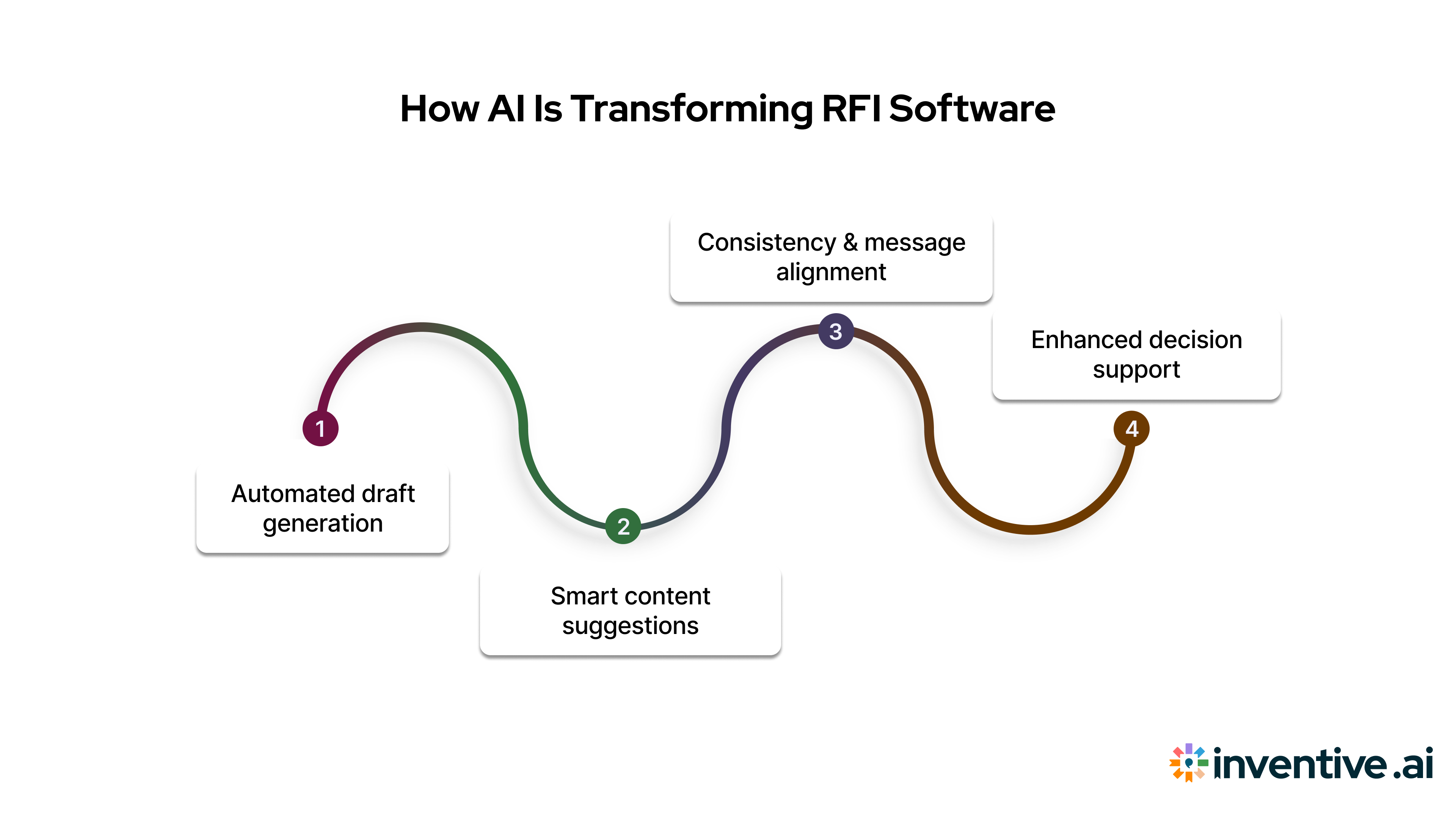
Here’s how AI makes a real difference:
1. Automated draft generation
AI can scan your library of past responses, questions you’ve seen before, and your approved content, then produce a first‑draft answer that is already tailored to the current RFI. According to one industry article, AI in RFI/RFP workflows can reduce preparation time by up to 50‑70%.
2. Smart content suggestions
Instead of leaving your team to search for the right paragraph or document, the AI proposes content based on context. It analyzes the question, matches it with your knowledge base, and brings forward high‑confidence answers.
3. Consistency & message alignment
One of the biggest risks in manual RFI response is drift, different people giving different answers, different tones, and outdated content. AI systems track your approved library and flag stale or contradictory material, so every answer aligns with your brand’s voice and guardrails.
4. Enhanced decision support
AI assesses patterns from past RFIs, flags common pitfalls, and identifies which content is frequently reused and which isn’t performing. When you know your response quality and content effectiveness, you can improve your win rates.
By leaning on AI, you free up your team from repetitive and manual tasks, letting them focus on high‑value work, customizing responses, refining strategy, engaging SMEs, and building persuasive proposals. The end result? Faster turnaround, higher‑quality responses, and a stronger advantage.
Top 10 RFI Software for 2025
Inventive AI

When it comes to RFI management, Inventive AI sets the standard. Built specifically for vendors, it combines hyper-contextual insights, real-time drafting, and intelligent content management to make RFI responses faster, sharper, and more accurate. If you want to move from reactive, manual processes to proactive, AI-driven efficiency, Inventive AI is the platform to trust.
Key Features
- 2× usable answers with minimal edits, cutting drafting time dramatically.
- Best-in-industry customization, adjust tone, detail, and value statements effortlessly.
- Only platform that answers value statements, turning standard replies into persuasive narratives.
- Centralized knowledge hub housing all prior RFIs, templates, and integrations.
- Proprietary Win Themes engine that identifies gaps, recommends improvements, and continuously refines response quality.
Pros
- Generates first drafts 10× faster than manual writing.
- Delivers consistent, brand-aligned responses every time.
- AI Content Manager keeps your library accurate, relevant, and up to date.
- Tailored for vendors across technology, healthcare, finance, and government sectors.
Cons
- Slightly limited analytics compared with legacy BI platforms.
Best For
- Enterprise sales, proposal, and solutions teams needing reliable, high-volume RFI automation.
Gartner Rating 5/5
Inventive AI is the most advanced, vendor-focused RFI software available, designed to help you create high-quality responses in a fraction of the time.
Sifthub

Sifthub offers AI-driven proposal generation with a sleek UI, designed for teams needing fast automation. But, it’s primarily focused on proposals rather than specialized RFI workflows, meaning it lacks advanced content governance and RFI-specific features.
Features
- AI-based response creation
- Real-time collaboration
- Custom workflow setup
Pros
- Attractive UI and intuitive setup
- Decent automation for smaller teams
Cons
- Limited RFI-specific structure
- Weak integration ecosystem
- Minimal library governance
Gartner Rating: N/A
A modern proposal tool, but not specialized enough for complex RFI environments that depend on robust automation and content intelligence.
Loopio
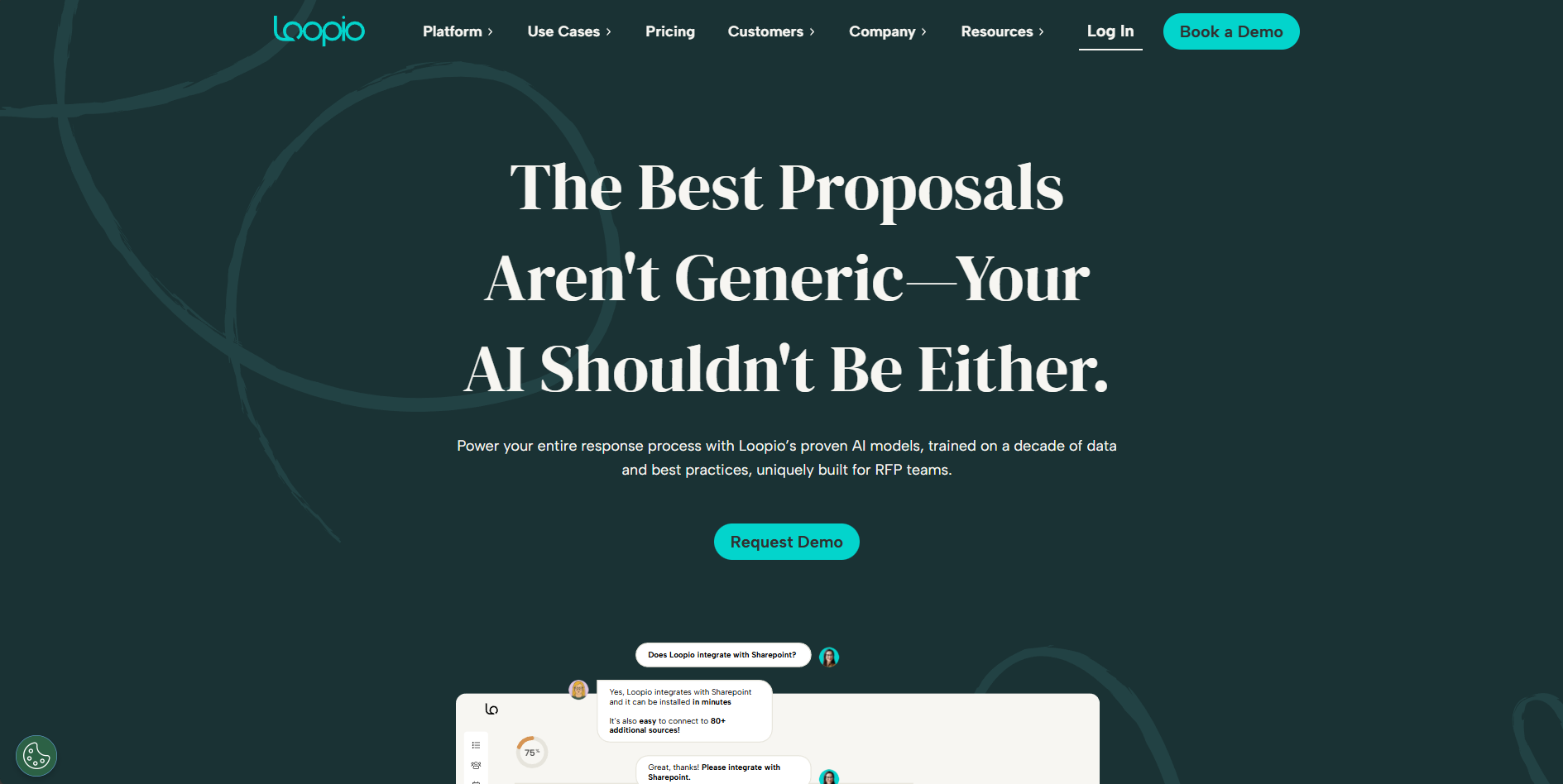
Loopio is a solid tool for managing RFI responses, especially useful for smaller to mid-sized teams looking to improve collaboration and content reuse. But, its lack of AI-driven drafting and advanced customization means that larger teams or those with complex RFIs might find it lacking.
Features
- Centralized content library
- Collaboration and workflow tools
- Basic system integrations
Pros
- Intuitive setup with minimal training needed
- Active community support and reliable documentation
Cons
- Lacks deep AI response generation
- Limited scalability for enterprise-level RFI management
- Fewer integrations for cross-platform use
Gartner Rating: 4.4
Loopio is dependable for small to mid-size teams but may not provide the automation or AI-driven precision that complex vendor workflows demand.
Responsive (formerly RFPIO)
.png)
Responsive offers strong RFI workflow management with content libraries and integrations. But, its AI lacks depth, especially when it comes to generating nuanced or complex RFI responses quickly.
Features
- Centralized answer library
- AI-based suggestions
- Integration with CRM, Slack, and Teams
Pros
- Designed for large enterprises
- Robust workflow automation features
Cons
- AI-generated suggestions lack contextual depth
- Add-ons for advanced AI functions raise costs
- Slower first-draft generation compared to newer players
Gartner Rating: 4.3
Responsive is great for RFP-heavy organizations but less suited for vendors that rely on fast, tailored RFI responses.
Suggested Alternative: Inventive AI
Inventive AI delivers deep‑context drafting, instant first‑drafts, and AI‑driven win themes, making it far stronger than Responsive for fast‑moving vendors who need high‑quality, tailored RFP/RFI responses.
AutoRFP AI

AutoRFP AI offers AI-powered response generation for RFIs and RFPs, providing fast, AI-driven drafts. But, it still lacks the depth of content management, governance, and enterprise-level features needed for complex RFI workflows.
Features
- AI-generated drafts
- Document import (Excel, Word, PDF)
- Automated trust scoring
Pros
- Unlimited user access
- Built-in data security (SOC2, ISO 27001)
Cons
- Limited content governance
- Few enterprise integrations
- Shorter track record with large vendors
Gartner Rating: 4.9/5
A decent option for small teams experimenting with AI automation, but not mature enough for high-volume or compliance-heavy RFI processes.
DeepStream

DeepStream offers basic RFI and proposal management with document sharing and collaboration features. But, its AI capabilities and ability to handle large-scale, complex RFI workflows are underdeveloped compared to newer platforms like Inventive AI.
Features
- Real-time document collaboration
- Proposal tracking
- Reporting dashboards
Pros
- Excellent collaboration features
- Good for managing mixed proposal workloads
Cons
- Weak AI drafting capabilities
- Limited automation
- Requires frequent manual updates
Gartner Rating: N/A
Ideal for basic document tracking, but not equipped to deliver the AI speed and precision modern vendor teams expect.
QorusDocs
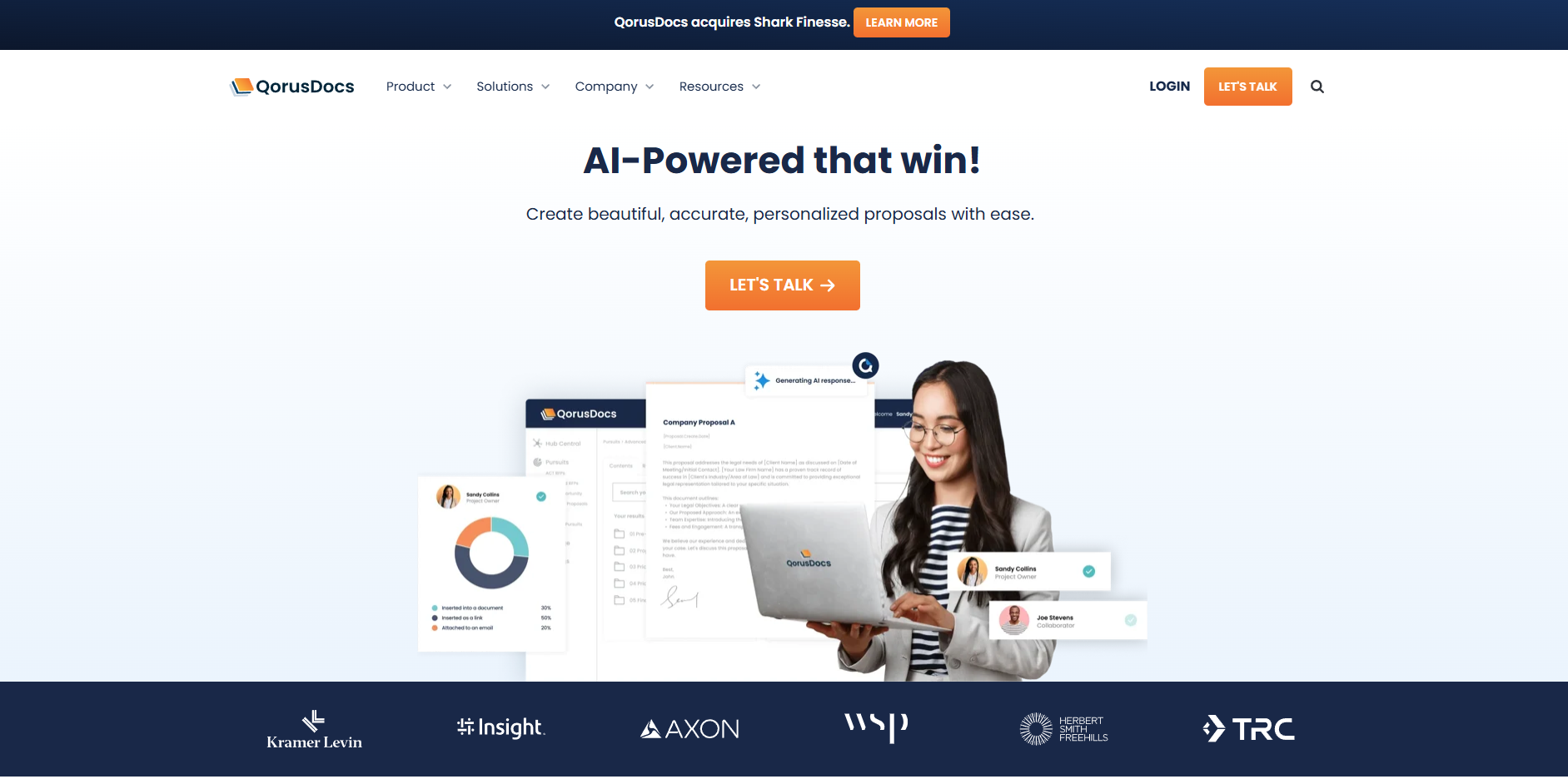
QorusDocs is known for proposal creation and AI-driven content reuse, but it struggles to meet the needs of teams focused specifically on RFI responses. But it still remains a solid choice for smaller teams looking to automate basic document creation.
Features
- AI content personalization
- Proposal creation
- Collaboration tools
Pros
- Good for marketing and sales proposal customization
- Strong template control
Cons
- Not tailored for vendor-side RFI workflows
- Limited security and compliance integrations
- Basic library management features
Gartner Rating: N/A
A good tool for proposal-heavy organizations, but less effective for teams needing advanced RFI automation and accuracy.
Qvidian (Upland)
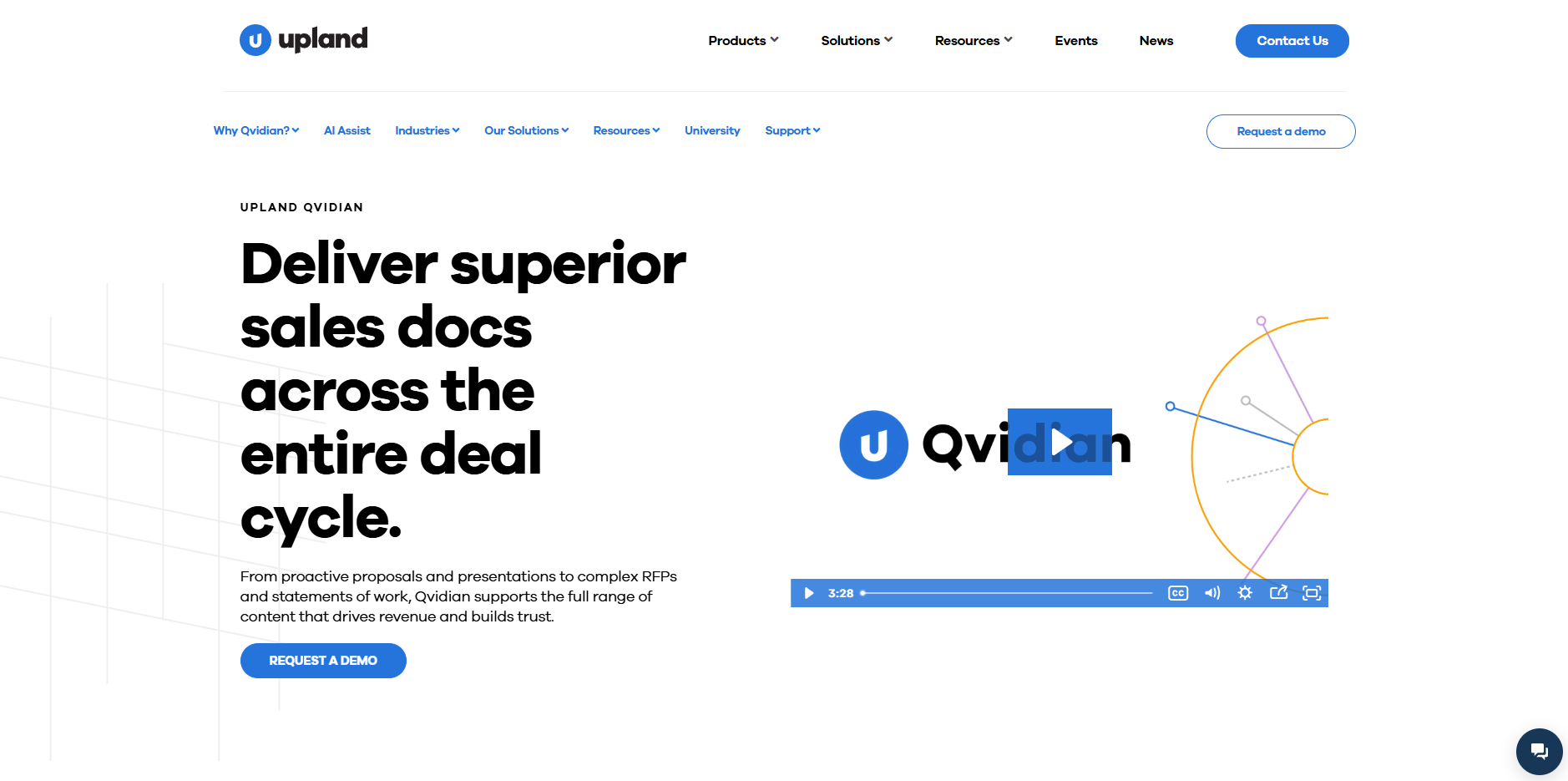
Qvidian (now part of Upland) has been a staple in proposal management, with a strong content library and workflow management. But, its older technology stack means it lacks the AI-driven insights and rapid first-draft generation that newer tools offer.
Features
- Answer reuse and content library
- RFI/RFP workflow management
- Compliance and review tools
Pros
- Trusted by large enterprises
- Excellent formatting and compliance control
Cons
- Outdated interface
- Slow AI development
- Less flexible customization
Gartner Rating: 4.7/5
A dependable legacy system, but not optimized for modern AI-driven workflows or large-scale vendor operations.
Suggested Alternative: Inventive AI
Inventive AI not only delivers instant, high‑quality first drafts but also leverages advanced AI‑powered insights and customization, offering a far more future‑ready solution compared to Qvidian’s legacy system.
Procore

Procore excels in managing RFIs within the construction industry, integrating project management with vendor tracking. But it’s tailored specifically for the construction sector, lacking the features required for other industries dealing with high-volume RFIs.
Features
- Construction RFI management
- Project and document tracking
- Team collaboration tools
Pros
- Excellent for construction RFIs
- Strong project documentation workflow
Cons
- Industry-specific, not scalable across sectors
- No AI drafting capabilities
- Minimal vendor workflow features
Gartner Rating: 4/5
A great pick for construction firms, but not built for general RFI response automation or vendor-focused teams.
Expedience Software
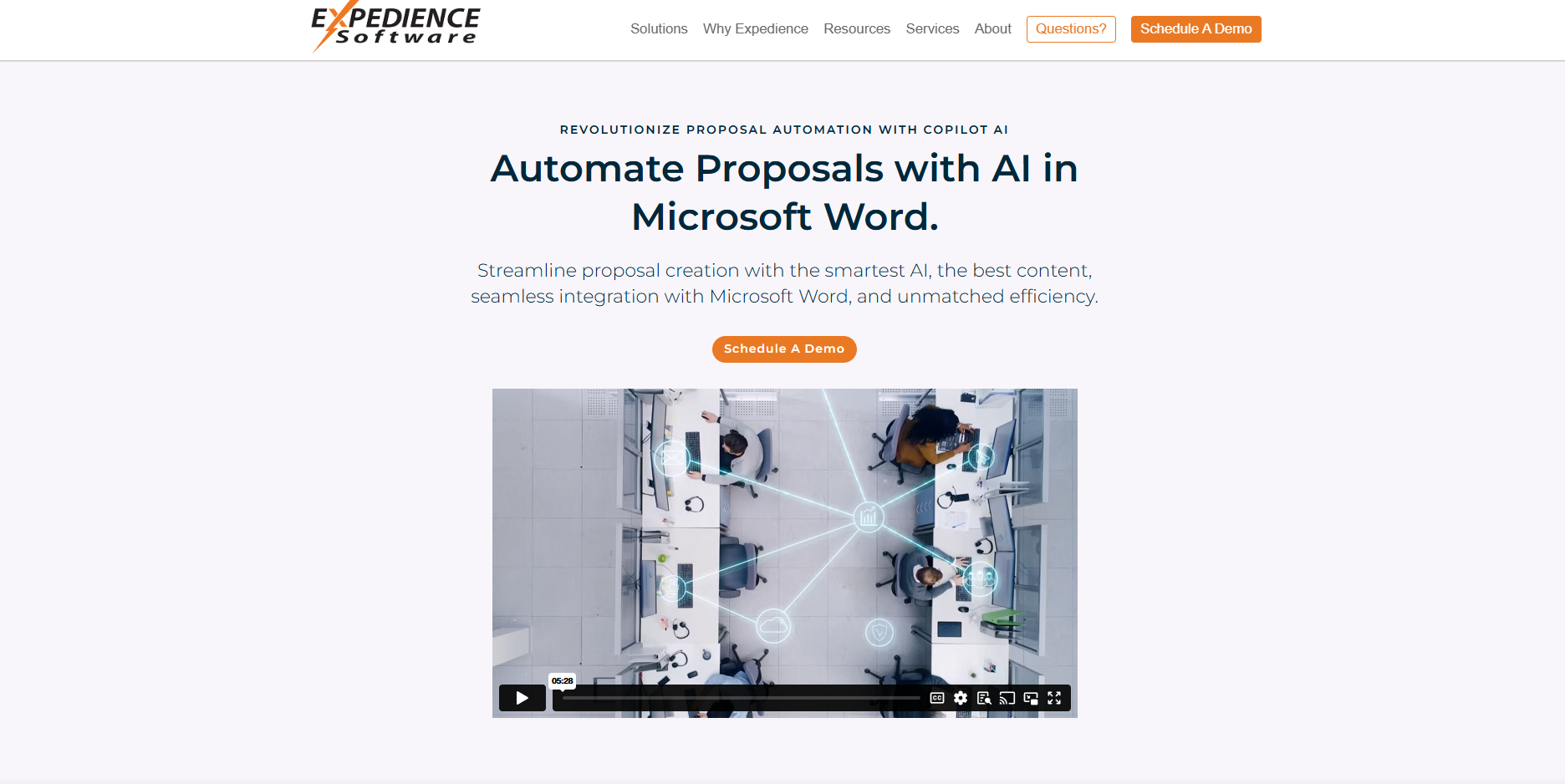
Expedience Software is a simple solution for RFP and RFI response management, tightly integrated with Microsoft Word. But, it lacks the AI-driven automation, content updates, and governance features that more modern platforms offer.
Features
- Word/Office integration
- Template-driven automation
- Workflow tracking
Pros
- Familiar interface for Office users
- Good formatting and branding control
Cons
- No AI automation
- Requires manual updates and maintenance
- Limited scalability
Gartner Rating: N/A
Simple, affordable, and familiar, but not future-ready for the growing demands of AI-powered RFI response management.
After evaluating all the tools, it’s clear that Inventive AI stands out as the top choice for RFI management, offering unmatched speed, accuracy, and customization, making it the ideal solution for teams looking to simplify their RFI response process and win more business.
How to Choose the Right RFI Software for Your Team
Selecting the right RFI software can feel overwhelming with so many options available. But when you break it down, it comes down to matching the tool’s features with your team's specific needs. Here’s a step‑by‑step guide to help you make the right choice:

1. Assess Your Team’s Pain Points
Start by identifying the areas where your team spends the most time or faces the most frustration. Are they spending hours drafting responses from scratch? Is there confusion around inconsistent answers or outdated content? Maybe the team struggles with collaborating efficiently across different platforms. Pinpointing these pain points helps you prioritize the features that will have the biggest impact.
2. Match Features to Needs
Once you’ve identified the challenges, look for software that directly addresses those issues. Key features to consider include:
- Content Management: Ensure the tool allows easy storage, organization, and retrieval of content. This will save your team from constantly reinventing the wheel.
- AI-driven Automation: Look for tools that automate repetitive tasks, like generating first drafts or suggesting content based on previous responses, so your team can focus on high‑value work.
- Integrations: Does the software integrate smoothly with the tools your team already uses, like your CRM, SharePoint, or communication platforms (e.g., Slack or Teams)? Smooth integration can save time and avoid confusion.
3. Consider Ease of Use
The best software is one that your team can easily adopt without a steep learning curve. A tool that is intuitive and user-friendly reduces the time spent on training and implementation, allowing your team to hit the ground running. Make sure the interface is simple to understand, with easy access to the features your team will use most.
4. Evaluate Scalability
Your team’s needs will grow as your company scales, so choose software that can grow with you. Make sure it can handle increasing volumes of RFIs without compromising on performance. Whether it’s supporting more users, more complex proposals, or additional integrations, scalability is important for long‑term success.
5. Pricing vs. ROI
While pricing is an important factor, it should be viewed in terms of the return on investment (ROI). The right software should save your team time and help them create higher‑quality proposals, ultimately boosting your win rate.
So, look at the cost in relation to the time savings, improved proposal quality, and the potential increase in deals won. A tool that improves efficiency and proposal outcomes can quickly pay for itself.
Pro Tip: Before making a final decision, run a pilot test with your top two RFI tools. This gives you a chance to evaluate their performance in real‑world scenarios, helping you choose the one that best fits your team’s needs in terms of response time, quality, and overall impact.
Choosing the right RFI software is an important step toward improving your team’s efficiency, proposal quality, and ultimately, your win rates. By selecting a tool that aligns with your team’s needs, you can simplify the RFI process, reduce manual work, and set your team up for long‑term success.
Why Teams Using Traditional RFI Software Lose Out
Relying on outdated RFI software or manual processes can seriously hinder your team’s ability to stay competitive. Here’s why traditional systems often cause businesses to miss opportunities:
1. Manual Workloads
Without automation, your team spends excessive time drafting responses from scratch, gathering data across multiple systems, and reworking old content. This not only slows down the process but also keeps your team from focusing on higher-value tasks.
2. Inconsistent Responses
When responses aren’t automated or standardized, you risk varying quality across proposals. Inconsistent answers can damage your credibility and leave buyers questioning whether your company is the right fit.
3. Lack of Real-Time Collaboration
Teams working on separate platforms or struggling with poor communication tools often find themselves bogged down by delays. Without real-time collaboration, important updates or feedback can be missed, leading to errors and missed deadlines.
4. Missed Opportunities
Slow response times and inconsistent proposal quality can result in lost deals. In a competitive market, this delay can make the difference between winning and losing business, especially when buyers are looking for fast, reliable solutions.
Relying on traditional RFI software can slow down your processes, compromise the quality of your responses, and ultimately cost you valuable business opportunities, making it clear that upgrading to more efficient, AI-powered solutions is important for staying ahead.
Also Read: How RFP Template Automation Software Can Create Faster Responses
Why Inventive AI Is the Ultimate Choice for RFI Management
Inventive AI changes the way businesses respond to RFIs, offering an easy solution that improves speed, quality, and consistency across your entire RFI workflow. Here’s why it’s the best choice for your team:
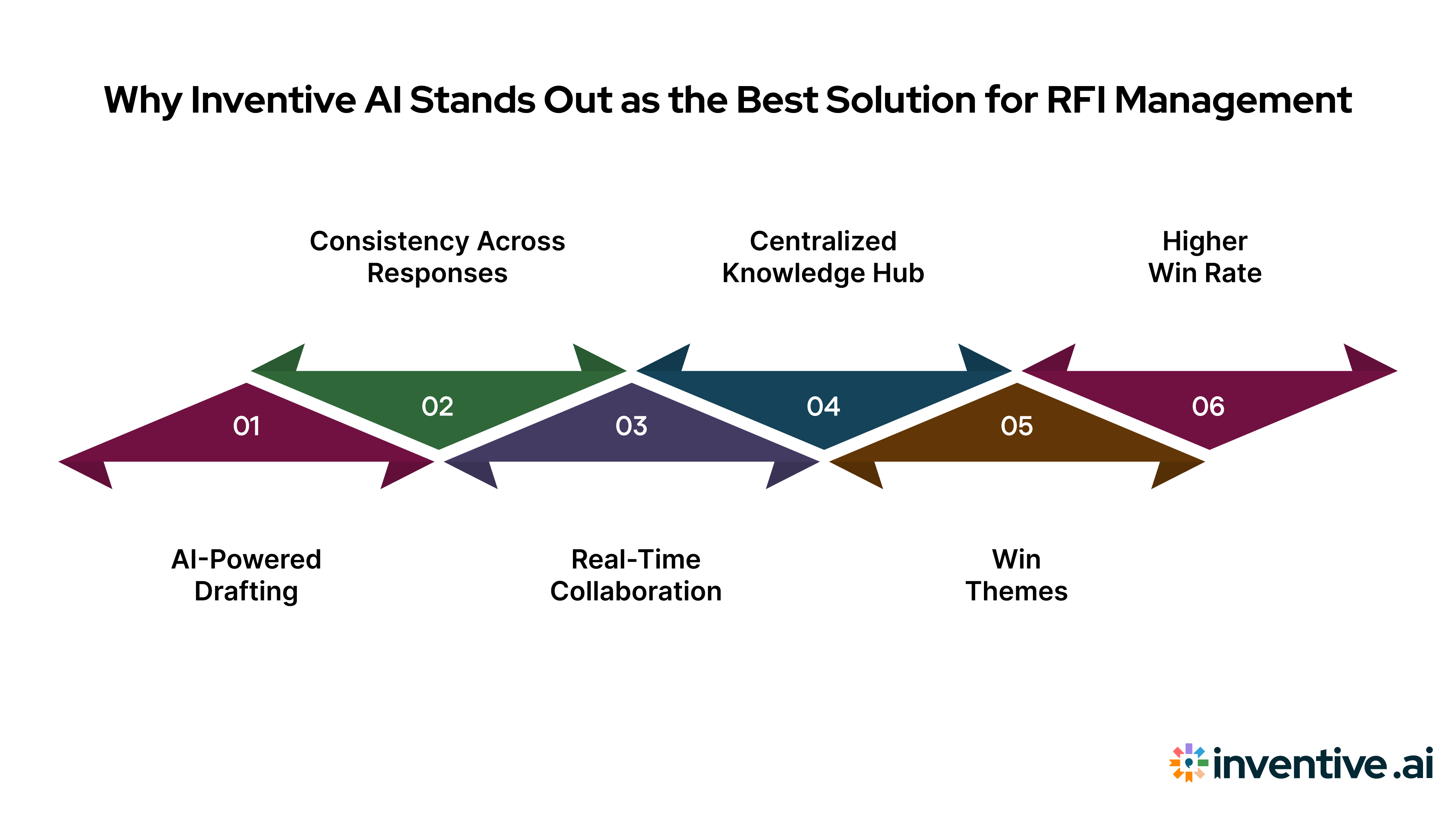
1. AI-Powered Drafting
Inventive AI automates the initial drafting process, saving your team valuable time. With drafts generated up to 10x faster than traditional methods, your team can focus on refining content rather than starting from scratch.
2. Consistency Across Responses
AI ensures every response aligns with your company’s voice and messaging. This consistency builds trust with potential clients and helps maintain a unified approach across all proposals.
3. Real-Time Collaboration
With built-in collaboration features, Inventive AI allows your teams to work together seamlessly. Whether your team is spread across departments or working remotely, the integration with tools like Slack, Teams, and SharePoint makes collaboration smooth and efficient.
4. Centralized Knowledge Hub
Inventive AI’s centralized knowledge hub brings all your past RFI responses, content, and data into one place, so your team can easily reuse relevant information and avoid duplication. This not only saves time but also ensures that your responses are always aligned with the most up-to-date information.
5. Win Themes
Inventive AI goes beyond simply drafting responses. The Win Themes feature continuously optimizes proposals by identifying content gaps and suggesting enhancements, ensuring that your responses are always competitive and tailored to meet buyer expectations.
6. Higher Win Rate
Companies using Inventive AI see a 50% increase in win rates. By automating the drafting process, improving collaboration, and ensuring content quality, Inventive AI speeds up response times and increases your chances of success in competitive bidding processes.
Inventive AI helps your team work smarter, respond faster, and win more deals, making the entire RFI process smoother and more effective.
Frequently Asked Questions (FAQs)
What is RFI software?
RFI software is designed to simplify and accelerate the process of responding to Requests for Information (RFIs). It helps teams gather data from vendors more efficiently, ensuring that the information is accurate, organized, and easy to access. This simplifies the entire RFI process, saving time and reducing the risk of errors.
What are the key benefits of AI in RFI software?
AI-powered RFI software offers numerous advantages, including faster response times, improved consistency across all submissions, and enhanced accuracy. By automating tasks like content generation and data management, AI tools make it easier for teams to meet deadlines, reduce manual errors, and improve overall proposal quality, which ultimately leads to higher win rates.
How does Inventive AI improve response times?
Inventive AI automates key aspects of the RFI process, such as content generation and document management, enabling your team to create responses 10x faster than manual processes. This gives your team more time to focus on strategic tasks, like refining proposals and aligning responses with client needs, rather than spending hours on repetitive, low-value work.
What industries can benefit from RFI software?
RFI software is beneficial in industries where gathering and evaluating vendor information is critical. This includes sectors like healthcare, finance, government contracting, and technology. In these industries, using RFI software can streamline procurement processes, reduce delays, and improve decision-making by centralizing and organizing critical data.
How do I know if Inventive AI is the right tool for my team?
The best way to find out if Inventive AI is the right fit for your team is to schedule a demo. During the demo, you’ll see firsthand how our AI-powered platform can automate your RFI process, speed up response times, and improve the quality of your proposals, ultimately making your team more efficient and helping you win more business.


